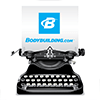Shoulders are THE most important muscle in terms of first impressions. Say what you will about "big guns" or having a big chest, calves, forearms, back, or any other muscles. When it comes to initially sizing up a person's power, shoulders are the most important of all. They are what give you width. Your back will never extend beyond your shoulders, and hence won't make as much of an impression.
At the same time, the shoulders are the true litmus paper of whether or not a bodybuilder knows what he's doing. An analysis of the average back double biceps pose will show that the vast majority of bodybuilders have far overpowering front deltoids, and size just tapers off from there, ending with small shadows of rear delts that barely look like actual muscles at all. Evenly developed shoulders separate the educated bodybuilder from the haphazard newbie.
Unfortunately, as of my writing of this article I have yet to see any shoulder article in a magazine, on a website, or in a book, that truly dissects shoulder training as thoroughly as it should be. In fact the vast majority all say the same thing: Some sort of press, followed up with various raises and possibly some upright rows. Here I'll be exposing possibly the BIGGEST mistake every trainer makes when doing shoulders, including those who have been lifting for 15 years, and many IFBB pros.
Mistakes Everyone Makes When Training Shoulders
Okay, first the big statement in this article, and I want you to listen to this part very carefully: You have been doing your front and rear raises all wrong. There. I want you to read that over a few times and let it sink in. There's nothing to be ashamed of, it's true for most. Very few trainers do their front raises right, and to this day I have yet to see anyone doing rear raises correctly. But why? The reason is: Nearly all trainers do all types of raises with their side delts. Think about it. When doing front raises, how do you hold the dumbbell? Palm down most likely.
And during your bent over raises? Palms down again. Now hold your arm out with your palm down. Which delt head is facing up? It's not your front. The front will be contracted, yes, but the side delt will be taking the brunt of the force.
So why is THAT? It's all because of the position of the shoulder. Why do military presses work the front delt? Because the front head is the one directly along the line of stress. Okay, that was a complex sentence. Let's simplify things: in any dumbbell movement, the direction of the stress is down towards the floor. Naturally, we want the muscle facing the ceiling, then. So, logically, for front raises we want the front delt facing up, for side raises the side, and for rear raises the rear.
Back to arm position now, in military presses the front delt head is facing up. Now extend your arms outward and make sure the front delt is still facing up. What direction is your hand in? Hammer grip. Now do the motion of a front raise with a hammer grip. Which head is facing up? That's right, the front.
So now we have a way to think of things. If you haven't been paying attention up to now, that's okay. Here's the take-home part: Think of your hand like your shoulder. Make a fist. This is now your shoulder, for all intents and purposes. The thumb side is your front delt, the back of your hand is the side, the pinky side is your rear delt. Whichever side is facing the ceiling is the one that's getting used.
So for bent-over raises, you'd want to hold the dumbbells so your palms are facing the wall behind you, not facing each other. For front raises, a hammer grip, and for side raises, the conventional palms-facing the floor. Without using this targeted approach to delt training, it's nearly impossible to get evenly developed shoulders.
Before we get into a routine, I'd also like to outline the two best shoulder exercises that no one does.
High Pulley Laterals:
A beautiful rear delt move. Use the high pulleys in a crossover machine, with no handle attachments. Take the ball on the right pulley with your left hand, the ball on your left with your right. Now stand slightly back and lean back a little, so the cross of the two cables is above your nose. Now, simply, pull as far out as you can go, keeping a soft and constant bend in the elbows. Keep your elbows facing the floor and think of pulling in a downward arc.
Cuban Presses:
Think of it like an upright row plus military press. Holding a bar slightly outside shoulder width and smoothly pull the bar up to your neck, rotate your shoulders and then perform a military press, stopping just before lockout, and carefully let it go back down. To your waist. This move hits everything. Front/side/rear delt heads, and works the rotator cuffs well.
The Routine
Bent over raises: 3x12
High pulley laterals: 3x12
Cuban presses: 3x9
Side raises: 4x12
Front raises (simultaneous): 3x12
Click here for a printable routine of this workout!
And there you have it. Even shoulder development. Remember the shoulder position and well-developed shoulders will be yours.
Until next time,
